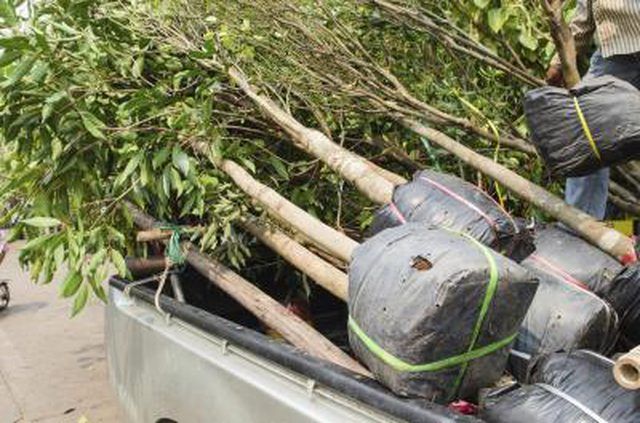Bulbs
Flower Basics
Flower Beds & Specialty Gardens
Flower Garden
Garden Furniture
Garden Gnomes
Garden Seeds
Garden Sheds
Garden Statues
Garden Tools & Supplies
Gardening Basics
Green & Organic
Groundcovers & Vines
Growing Annuals
Growing Basil
Growing Beans
Growing Berries
Growing Blueberries
Growing Cactus
Growing Corn
Growing Cotton
Growing Edibles
Growing Flowers
Growing Garlic
Growing Grapes
Growing Grass
Growing Herbs
Growing Jasmine
Growing Mint
Growing Mushrooms
Orchids
Growing Peanuts
Growing Perennials
Growing Plants
Growing Rosemary
Growing Roses
Growing Strawberries
Growing Sunflowers
Growing Thyme
Growing Tomatoes
Growing Tulips
Growing Vegetables
Herb Basics
Herb Garden
Indoor Growing
Landscaping Basics
Landscaping Patios
Landscaping Plants
Landscaping Shrubs
Landscaping Trees
Landscaping Walks & Pathways
Lawn Basics
Lawn Maintenance
Lawn Mowers
Lawn Ornaments
Lawn Planting
Lawn Tools
Outdoor Growing
Overall Landscape Planning
Pests, Weeds & Problems
Plant Basics
Rock Garden
Rose Garden
Shrubs
Soil
Specialty Gardens
Trees
Vegetable Garden
Yard Maintenance
How to Transplant Established Plants
How to Transplant Established Plants. Despite gardeners' good intentions, plants sometimes end up in less than ideal spots. Successful moves require preparation of new sites and the plants themselves. Established plants can suffer shock when moved, even if it's just across the yard. Whether moving trees, shrubs or perennial flowers, the same basic...

Despite gardeners' good intentions, plants sometimes end up in less than ideal spots. Successful moves require preparation of new sites and the plants themselves. Established plants can suffer shock when moved, even if it's just across the yard. Whether moving trees, shrubs or perennial flowers, the same basic principles apply: Retain as much of the root system as possible, and minimize the plant's stress. Proper planting and aftercare help avoid transplant shock and increase transplant success.
Timing Moves
Optimal transplant times vary according to your location and the plants involved. Smaller, younger plants can be moved more easily and recover faster than mature, established plants. In general, time your transplanting to allow plant roots plenty of time to establish before your harshest season hits. In northern climates, spring transplants settle in during moderate summers, long before winter arrives. In southern climates, fall planting lets roots establish over mild winters before summer heat hits. Many trees and evergreens transplant well in early fall in all climates. Local nursery professionals or county extension offices can help determine what timing best suits your case.
Planning Ahead
Large plants sacrifice lots of roots when moved. Even on large trees, most roots stay within 1 foot of the surface, but they extend horizontally two to three times the plant's height or spread. Moved from their spot with little warning, large plants undergo shock caused by their sudden root loss. Prepare large transplants by pruning their roots during dormancy, six months or more before the move. Establish how large a root ball you intend to dig and move. Then cut down through the roots with a sharp shovel, a few inches inside your imaginary digging line. This stimulates new root growth inside that boundary to balance future loss.
Preparing Sites
Before you uproot a plant, prepare the new planting hole. Be sure the site meets your plant's needs for sun, soil, drainage and mature size. Dig the hole two to three times as wide as the root ball you plan to dig and roughly the same or slightly less deep. Once moved, plants should grow at the same level or slightly higher than they grew previously. Use a shovel to scrape up the sides of the hole so roots can penetrate and spread. Do not add soil amendments or fertilizers; leave the soil in its native state. Amendments can create a containerlike, bathtub effect and cause roots to circle; fertilizers can damage vulnerable transplant roots.
Transplanting Plants
Plan moves for cool, cloudy, calm days without drying winds. Water plants well a few days before, and mark the north-facing sides. Dig root-pruned plants at their designated lines. Dig others as large as can comfortably be moved. Watch for major lateral roots as you dig, and go below that depth. Place plants in containers or protect roots with burlap or cloth, and replant immediately. At a new site, center a plant in its hole. Add more soil underneath to raise it higher, if needed. Fill the hole with its original soil about two-thirds of the way full, then fill the hole with water and let it drain. Finish backfilling the hole, firm the soil lightly and water it in again.
Caring for Transplants
Regular moisture is essential during a transplant's first three months. Even drought-resistant plants need consistent soil moisture during this time of root establishment. Too much water can be as harmful as too little. Monitor moisture by hand; dig down a trowel's length for large plants. Keep soil moist but never saturated. One inch of weekly water, including rainfall, normally suffices. Adjust for your weather and the season. Watering deeply once per week is better than several shallow waterings in most soils. Deep watering encourages deep root growth. Two to 3 inches of organic mulch regulates soil temperature and retains moisture. Keep mulch several inches away from plant trunks or stems.